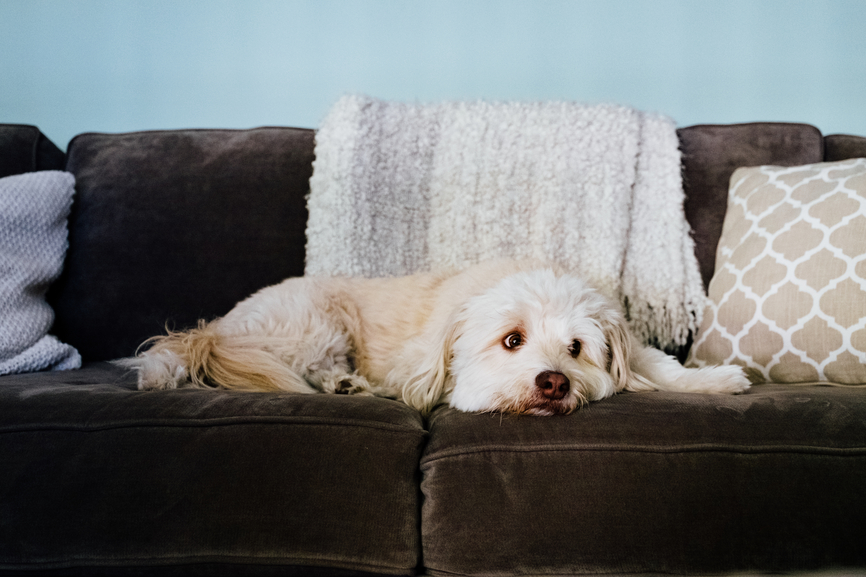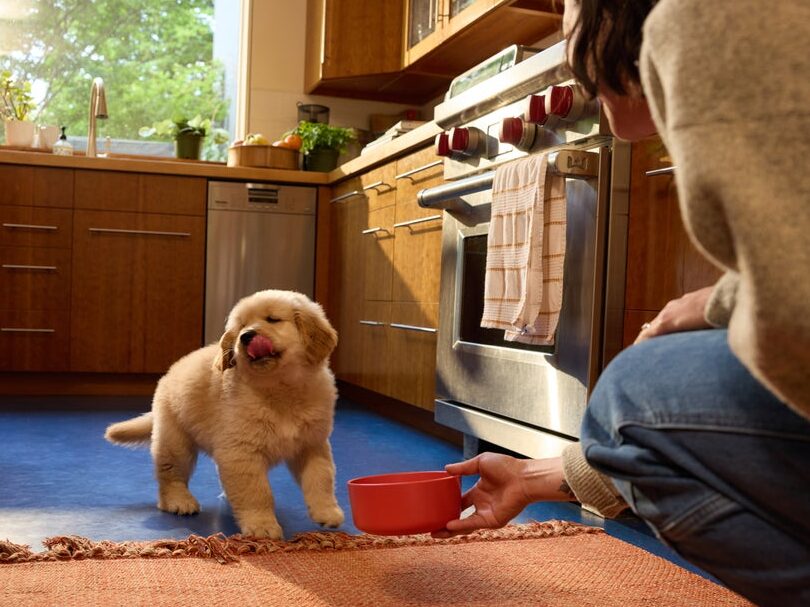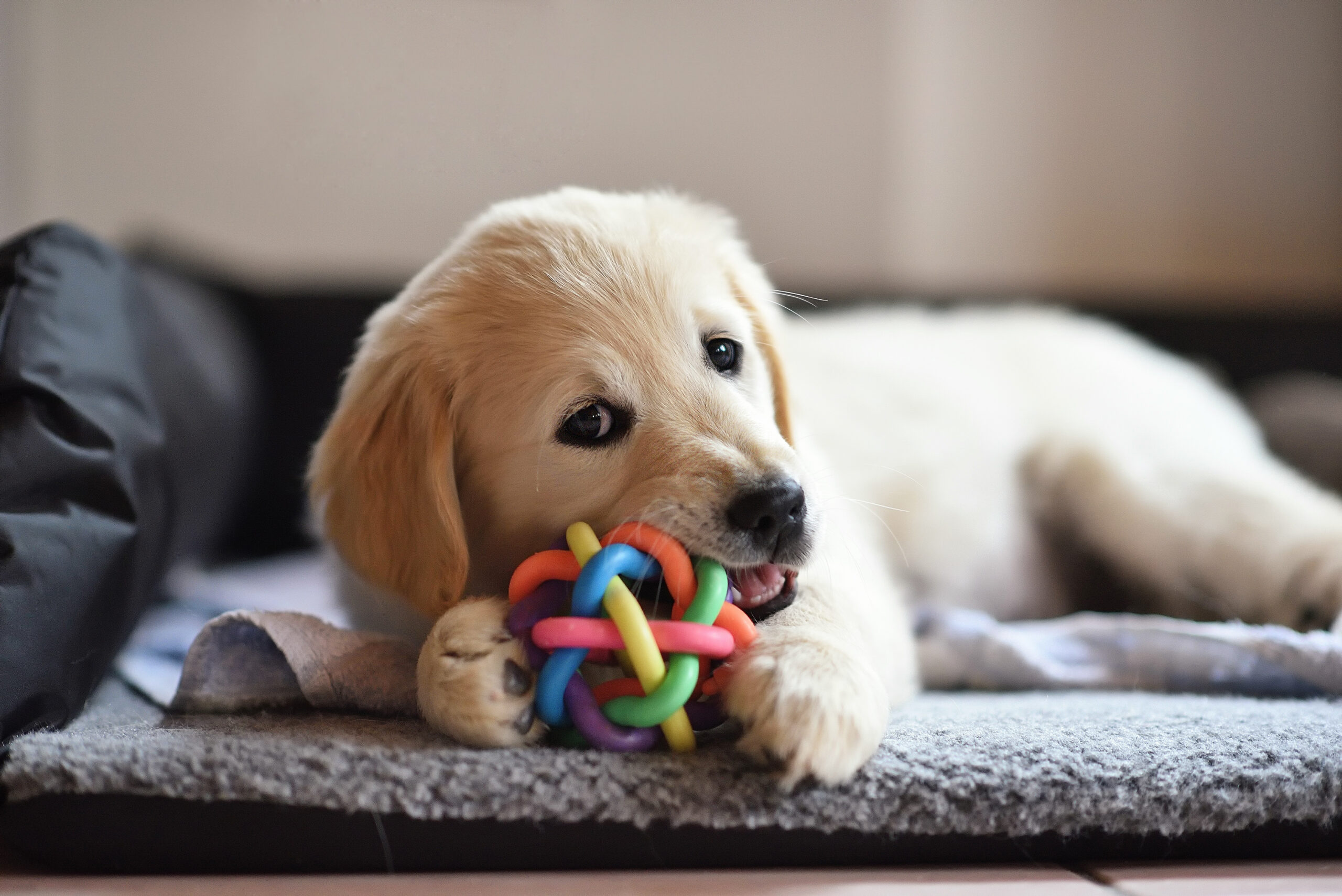Hey Ollie blog readers! We’re offering you an exclusive 60% OFF your starter box! Try now!
Dog depression is a real thing, and it’s probably more common than you think. If your normally happy-go-lucky dog seems to uncharacteristically, lethargic and sad-eyed, and you might find yourself wondering, “Could my dog be depressed?” Yes, it’s possible. Here are warning signs of pet depression and what to how to help your dog get to a happier place.
What is Dog Depression Anyway?
When we say that a dog is suffering from depression, what does this really mean? According to the Merck Veterinary Manual, depression for dogs is indicated by behavioral issues, including listlessness, dullness, and lethargy. It’s unclear if dogs experience clinical depression in the same way that humans do. While people may suffer from clinical depression regardless of what’s happening in their life (good or bad), dogs often show signs of depression are tied to external circumstances. It’s common for dogs to get a case of the blues or to be generally stressed when they lose something—this can be as significant as a family member or as seemingly trivial as a couch.
Do dogs get seasonal depression?
If the short days and freezing temperatures have left you feeling a little low, you’re not alone. Each year, approximatey 5 percent of people suffer from seasonal affective disorder (SAD), a type of depression triggered by a change in seasons that can throw off levels of hormones including serotonin, a feel-good brain chemical, and melatonin, which helps regulate sleep. But can your pup also suffer from SAD?
Dr. Carol Osborne, D.V.M., an integrative veterinarian at Ohio’s Chagrin Falls Veterinary Center and Pet Clinic says…maybe. “It depends on who you talk to,” she says. “Some surveys show that up to 40 percent of dog owners notice a dip in dog moods in winter months.”
SAD can happen in any breed of dog, and it’s most commonly observed in areas of the country that don’t get a lot of sunlight in the fall and winter. If you notice that your pup shows a sudden lack of interest in the things he normally loves, is sleeping more during the day, is restless at night, or has gained or lost weight, you might want to bring him to the vet to rule out SAD or another serious medical issue.
It’s also a good idea to check in with yourself: According to Osborne, your dog might be taking cues from your own behavior. “In many cases, the dog might be mirroring their human’s feelings,” she says. “If an owner has the winter blues, the dog is right there, picking up those exact emotions. Today, as opposed to 10 or 20 years ago, the relationship and bond between human and dog is so close. The dog is extremely in tune with our emotions—and reacts to them. When your dog seems down and sad, it’s important for the owner to notice their own feelings.”
How Can You Tell If Your Dog is Depressed?
Changes in behavior are the most common signs of doggy depression. Here are some of the most common signs. Remember, if you notice your dog acting differently, it’s possible there’s something physical affecting him as well. If you’re concerned about your pup, a vet visit is always a good idea!
#1 Dog Depression Warning Sign: Decreased Appetite
Have your dog’s eating habits changed? Depressed dogs eat less than usual and often refuse food (and sometimes water).
What to do about it: Stick to a regular feeding schedule (morning and evening) where the food is only available at those intervals, then remove the bowl afterward. This will not only train him to respond to the availability, but regular routines are important to structure to combat depression.
#2 Dog Depression Warning Sign: Sleeping Through the Day
Your dog is sleeping. Like, a lot. When his regular 12 to 14 hours of sleep starts bleeding into 18+ hours, and he’s low energy even when he’s awake, it could be depression.
What to do about it: Just as with humans, regular exercise is a powerful tool for coping with depression. Take him for regular walks, playtime at the dog park, and games of fetch.
#3 Dog Depression Warning Sign: Recent Loss
Your dog seems to be mourning a death. If a family member (human or canine) has passed away or left the home, it’s perfectly normal for a dog to mourn the absence. He may wander around the home, appearing to be lost. Because, in a way, he is.
What to do about it: Love, encouragement, and time together can help emotional wounds heal. If there was a regular routine in place with that person or pet, do your best to fill in the gap and reinvent the routine.
#4 Dog Depression Warning Sign: Aggressive Behavior
Your dog is suddenly aggressive or destructive. If your once low-key dog is now growling, biting, or chewing household objects, it could be a short-fused cry for help.
What to do about it: Reach for the leash. Exercise is the quickest and most effective treatment in this case. Not only will he get those feel-good exercise endorphins, he can also expel that nervous anxiety in a natural way.
#5 Dog Depression Warning Sign: Frequent Accidents
Your dog is having accidents in the house. You used to brag to your friends about his impeccable house-training, but now you’re finding frequent “surprises.”
What to do about it: Keep calm and carry on. And maybe go outside as much as possible. If your dog’s eating habits are disrupted, chances are, his “elimination schedule” will be too. As mentioned, routine is helpful and so is patience. Once your dog is back to feeling himself, the accidents generally disappear.
For the most part, dog’s depressive episodes are short-lived, generally less than a few weeks. If your dog is exhibiting these warning signs or abnormal behavior for a longer period of time, it’s a good idea to schedule an appointment with your vet. Not only will they be able to assess your dog’s overall health and screen for any physical problems that might be contributing to the changes in mood, but they can also prescribe an antidepressant if necessary.
The Ollie blog is devoted to helping pet parents lead healthier lives with their pups. If you want to learn more about our fresh, human-grade food, check out MyOllie.com.
Tagged As:

The nutrition your dog needs,
the food they want.

Enjoying our articles? Subscribe our Newsletters and get new articles directly to your inbox
You might also like
13 May 2025
8 MINS READ
Puppy Training Guide & Behavior Timeline
Bringing home a puppy is pure magic. It’s also pure chaos—tiny teeth, zoomies, accidents in the house, and moments that make you wonder if you’re raising a future genius or a tiny tornado. …
by Ollie Pets
10 May 2025
12 MINS READ
New Puppy Checklist: Guide To Prepare For A New Dog
Bringing home a new puppy? This checklist covers everything new dog owners need—from essential supplies to training, feeding, and first vet visits.
by Ollie Pets
3 April 2025
9 MINS READ
Home Remedies for Fleas on Dogs: 10 Natural Ways That Actually Work
Wondering what kills fleas on dogs instantly and naturally? If your pup is scratching like crazy, it may be time to take action. In this guide, we’ll show you the most effective home remedies for…







